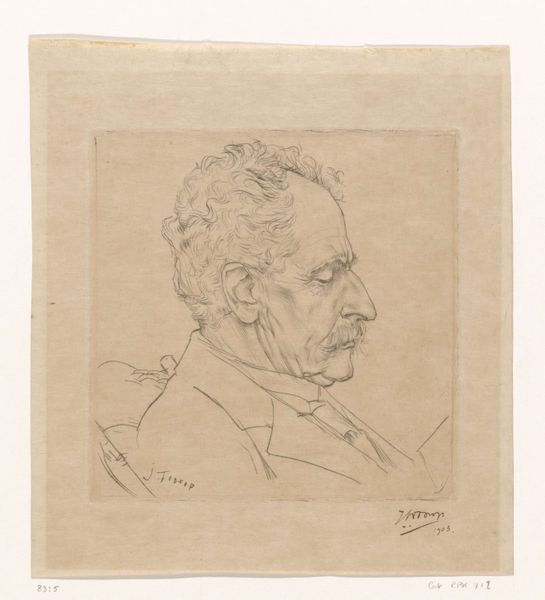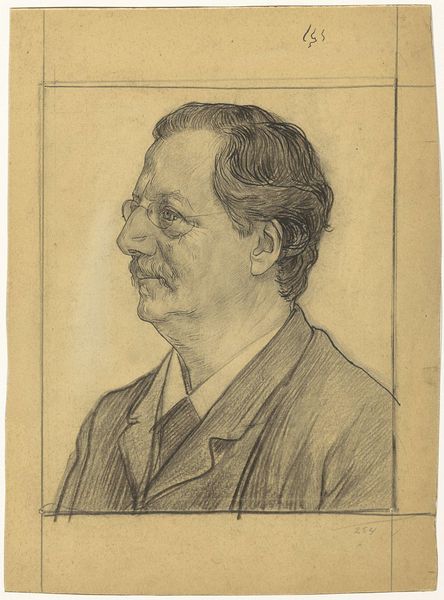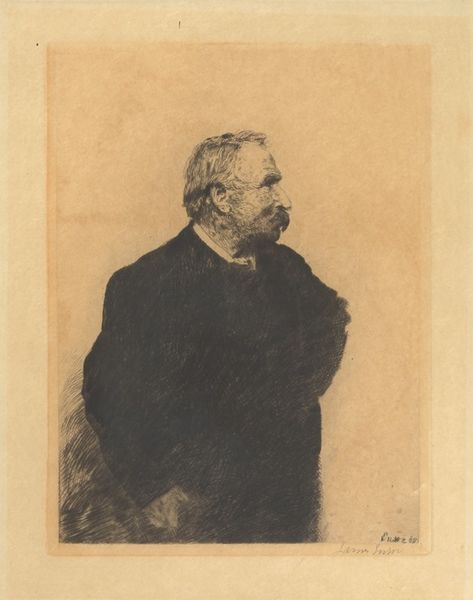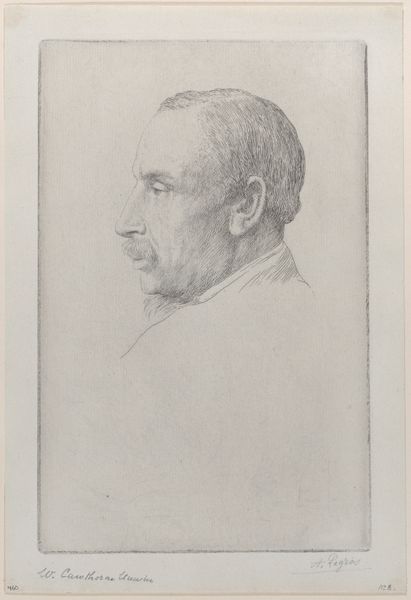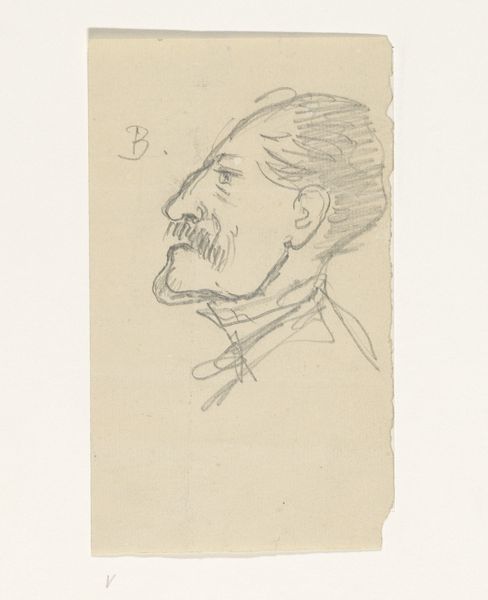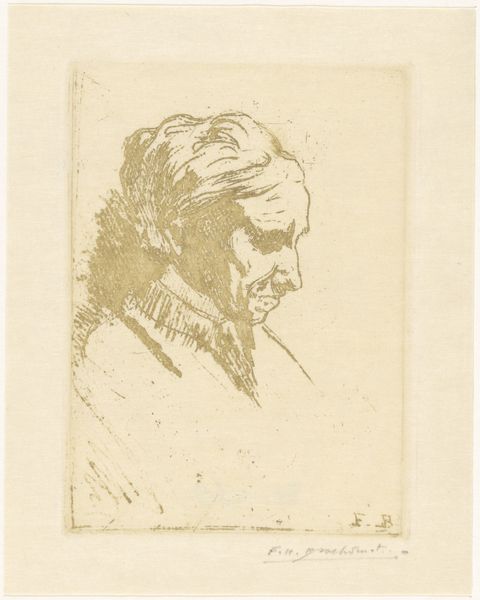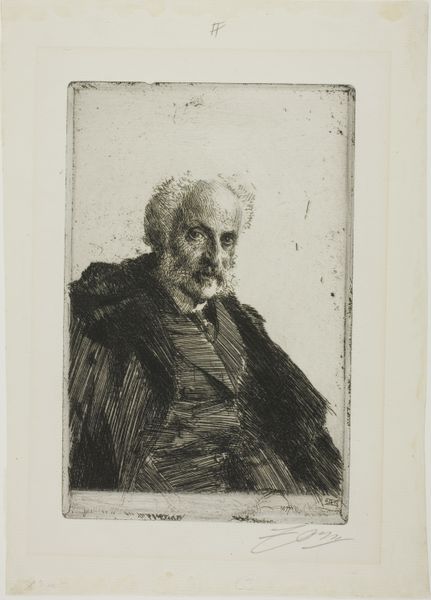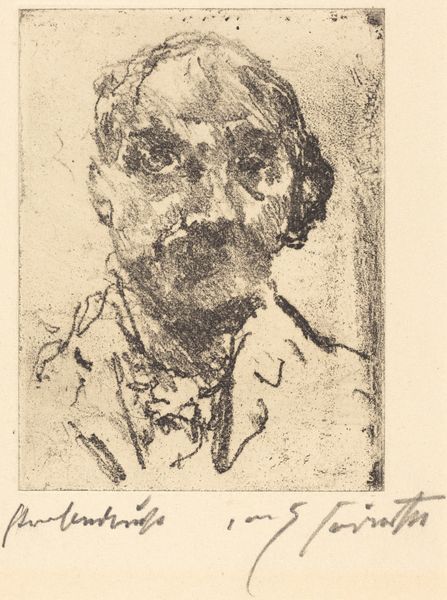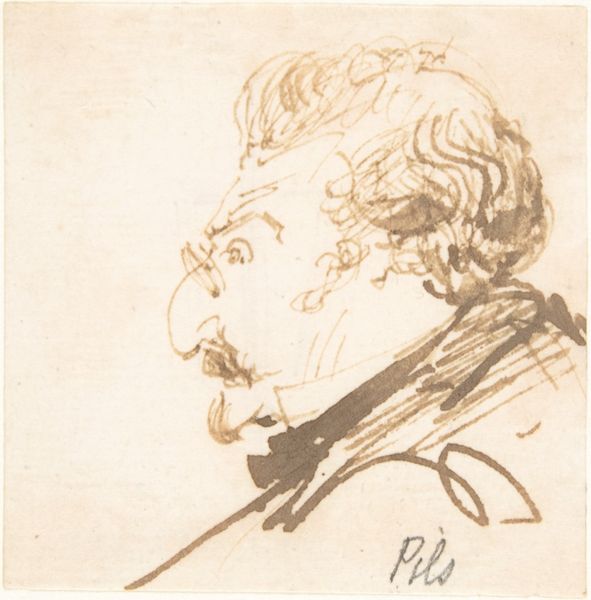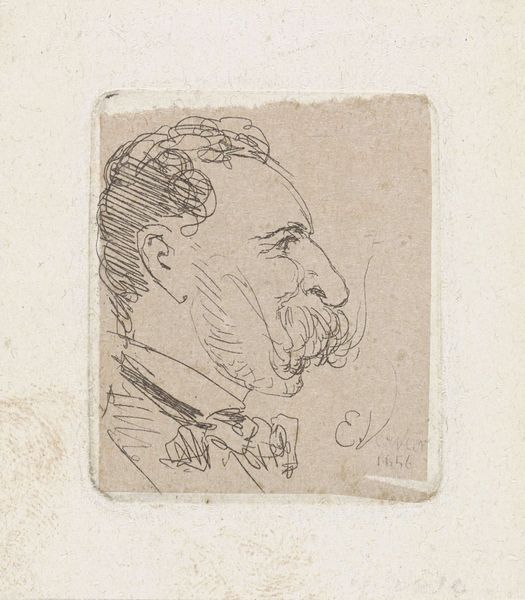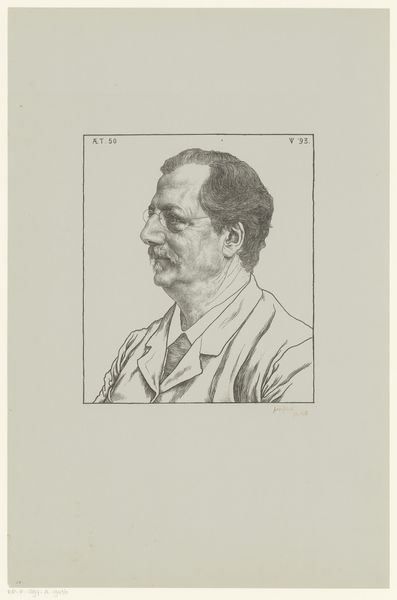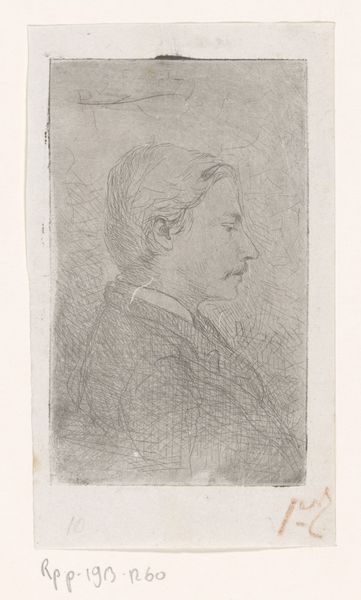
drawing, pencil
#
portrait
#
drawing
#
art-nouveau
#
pencil
#
portrait drawing
#
realism
Dimensions: height 154 mm, width 153 mm
Copyright: Rijks Museum: Open Domain
Editor: So this is Jan Toorop's "Portrait of Johan Drabbe," created sometime between 1903 and 1928. It’s a pencil drawing, and I find it so delicate and yet also incredibly detailed, especially the hair. What jumps out at you when you look at this? Curator: I’m drawn to the materiality of it, the directness of the pencil on paper. Think about Toorop's access to those materials. This isn’t just a portrait; it's a record of a process, a moment in the production and consumption of portraiture itself. It shows the means of production, unlike an oil painting. Do you consider the socio-economic conditions which dictated who could access what materials? Editor: That's interesting. I hadn't considered the pencil itself as being so central to the meaning. I guess I just assumed…everyone had pencils? Curator: Not necessarily. Even the simplest of tools have a history of accessibility and production. Look at the varying line weights and densities created with the pencil. It isn’t just about Drabbe; it’s about Toorop's skill, and what it meant to create art – even seemingly "simple" art – at the turn of the century. And pencil drawings became increasingly collectible items themselves. Do you think it challenges traditional distinctions of ‘high art’ considering it's a drawing and not a painting? Editor: Definitely. Focusing on the *how* and *why* makes me see past the surface-level image and consider the broader cultural implications. I think this makes pencil drawings become just as valid and potentially profound as other fine art forms. Curator: Exactly. Hopefully you can now see beyond the face of Drabbe, and more towards the means and history.
Comments
No comments
Be the first to comment and join the conversation on the ultimate creative platform.
